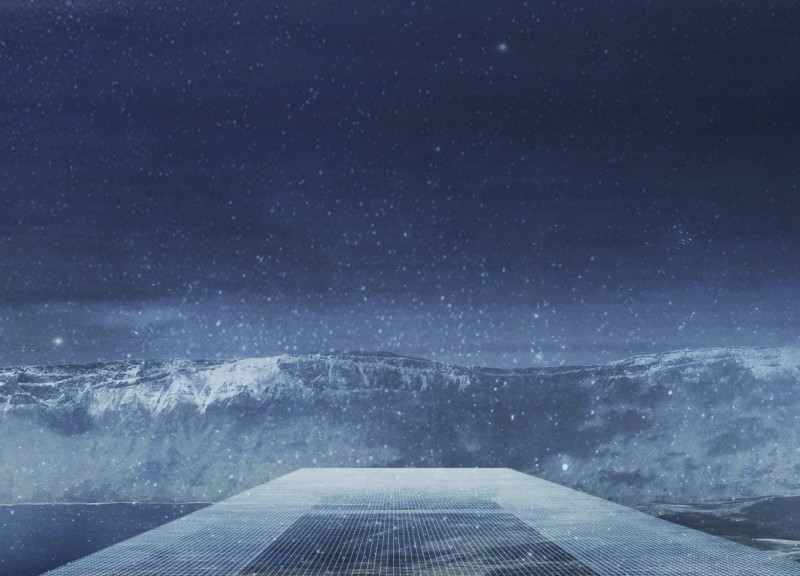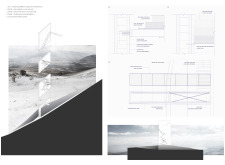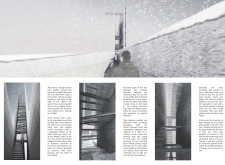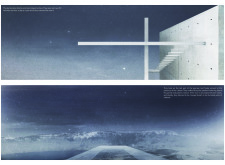5 key facts about this project
### Project Overview and Context
Located in an expansive region characterized by striking winter landscapes and volcanic activity, the design focuses on creating a structured visitor experience that culminates in a distinct viewing platform. The intent is to foster a deep engagement with the surrounding environment, allowing visitors to appreciate the natural beauty and geological features, including the caldera in the vicinity.
### Spatial Strategy and Configuration
The design implements a linear progression through a series of branching staircases and observation platforms, which encourage exploration and contemplation. The layout fosters personal engagement with the environment, offering multiple viewpoints that enhance the appreciation of the picturesque panoramas. A cantilevered viewing platform is a notable feature of the design, extending over the caldera to provide an immersive experience that connects visitors to the vastness of the landscape below.
### Materiality and Sensory Experience
The choice of materials, including reinforced concrete as the primary structural element, reinforces the project’s connection to its geological setting while ensuring durability. Metal mesh is incorporated in the staircase and railing systems, providing safety without obstructing views. The interplay between these rigid materials and the dynamic natural environment heightens the sensory experience, inviting visitors to engage with both the visual and tactile qualities of the architecture, such as the contrast between the solid surfaces and the cold air of the snowy landscape.





















































